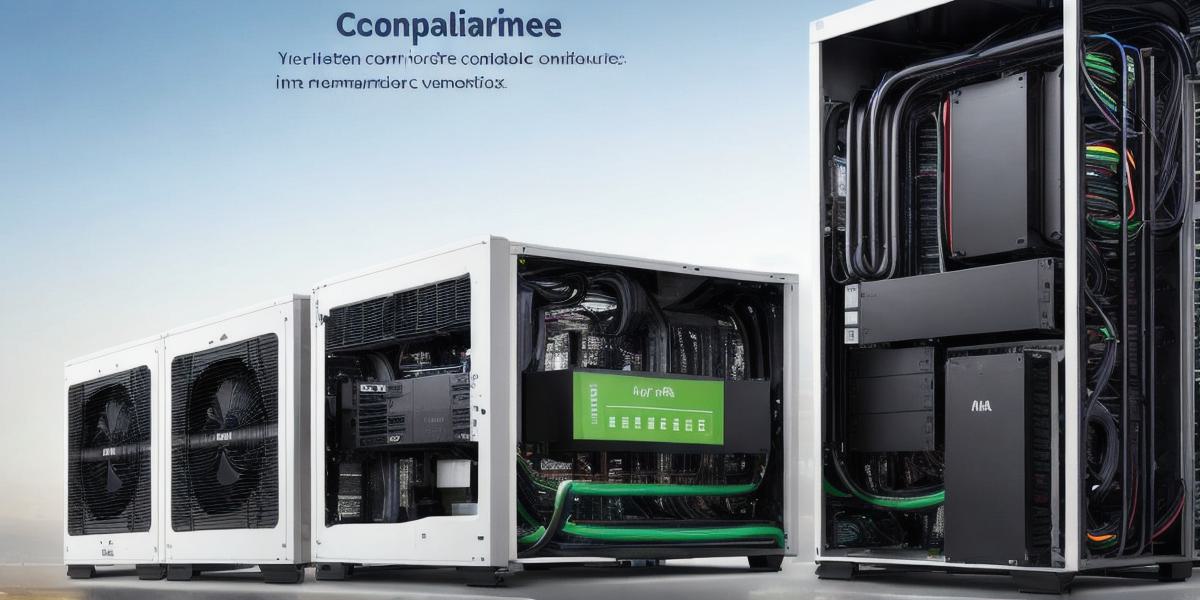The Ultimate Guide to Ideal Temperatures for Datacenters

Datacenters are vital for businesses and individuals alike, as they house critical data and applications that enable efficient operations. However, maintaining optimal temperatures within a datacenter is crucial to ensuring the longevity of the equipment and the efficiency of its operations. In this article, we’ll explore the ideal temperatures for datacenters and provide tips on how to maintain them effectively.
The Ideal Temperature Range
The ideal temperature range for datacenters is between 18°C (64°F) and 27°C (80.6°F). This range ensures that the equipment remains cool enough to prevent overheating, which can damage the hardware and reduce its lifespan. However, it’s important to note that some data centers may require higher or lower temperatures depending on factors such as the type of equipment being used and the climate in which the data center is located.
Maintaining Optimal Temperatures
1. Proper Airflow Management
Proper airflow management is critical for maintaining optimal temperatures within a datacenter. This involves ensuring that cool air enters the data center at the right places, circulates throughout the facility, and exits at the appropriate points. This can be achieved through the use of hot and cold aisles, air curtains, and other airflow management systems.
2. Cooling Systems
Cooling systems are an essential component of datacenter temperature control. These systems include air conditioners, chillers, and other cooling equipment that helps to remove heat from the data center. It’s important to ensure that these systems are properly maintained and serviced regularly to prevent breakdowns and ensure optimal performance.
- Monitoring and Alarm Systems
Monitoring and alarm systems are critical for detecting and responding to temperature fluctuations within a datacenter. These systems can alert you to potential issues, such as overheating or undercooling, and help you take corrective action before they become serious problems.
Case Studies: Real-Life Examples of Ideal Datacenter Temperatures
-
Google’s Data Center in Finland: Google’s data center in Finland uses a unique cooling system that leverages the cold temperatures of the Arctic region to cool its servers. The facility is located near the Arctic Circle, where temperatures can drop as low as -50°C (-122°F) during the winter months. By utilizing this natural cooling source, Google is able to reduce its carbon footprint and save on energy costs.
-
Amazon’s Data Center in Oregon: Amazon’s data center in Oregon uses a combination of hot and cold aisles to maintain optimal temperatures within the facility. The facility also utilizes a sophisticated cooling system that uses recycled water to cool the servers. By implementing these temperature control measures, Amazon is able to ensure efficient operations while minimizing its environmental impact.
FAQs: Answering Common Questions About Ideal Datacenter Temperatures
Q: Can I use a space heater in my datacenter?
A: Space heaters are not recommended for use in datacenters, as they can generate uneven heating patterns and increase the risk of overheating.
Q: How often should I service my cooling equipment?
A: The frequency of servicing your cooling equipment will depend on factors such as the size of the data center and the type of equipment being used. However, it’s generally recommended to have your cooling equipment serviced at least once a year.
Q: Can I use natural cooling sources in my datacenter?
A: Yes, natural cooling sources such as cold aisles and hot/cold airflow can be used in datacenters to maintain optimal temperatures. However, these methods may not be suitable for all types of data centers or climates.
Conclusion
Maintaining ideal temperatures within a datacenter is critical for ensuring efficient operations and minimizing the risk of equipment damage. By properly managing airflow, utilizing cooling systems, and implementing monitoring and alarm systems, you can maintain optimal temperatures within your data center. Additionally, by considering real-life examples such as Google’s Arctic Circle data center and Amazon’s Oregon data center, you can gain insights into innovative temperature control measures that may be suitable for your own data center.








